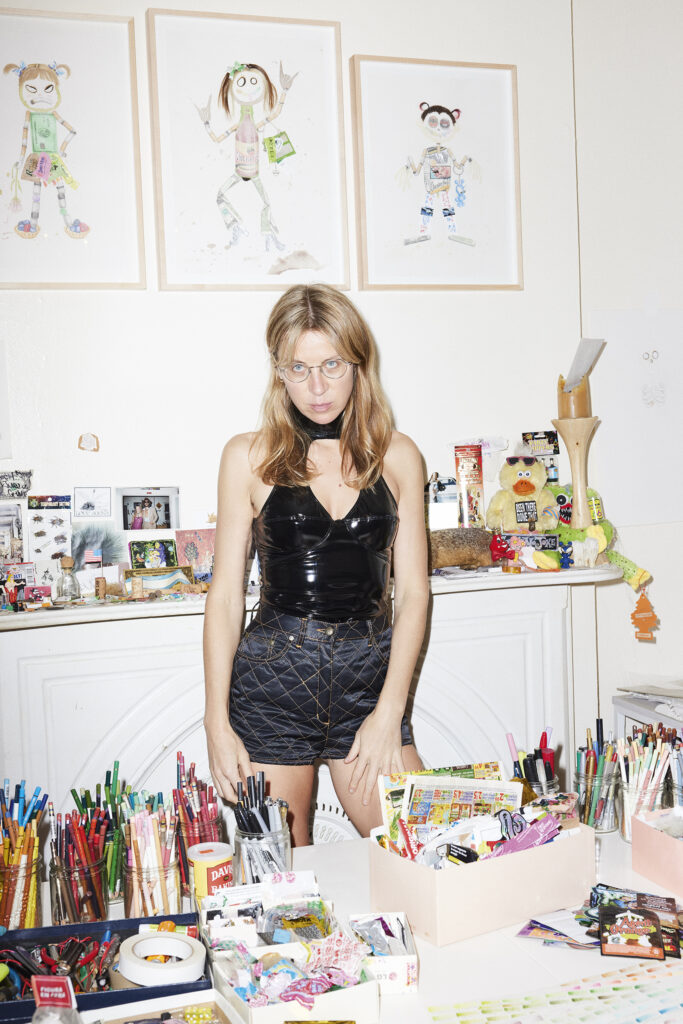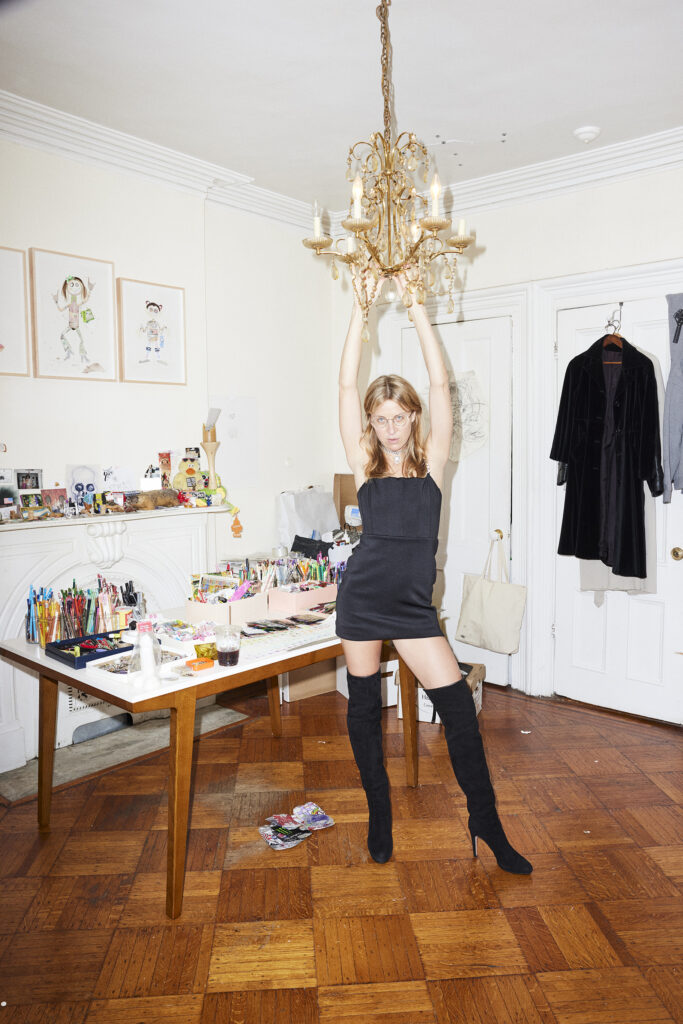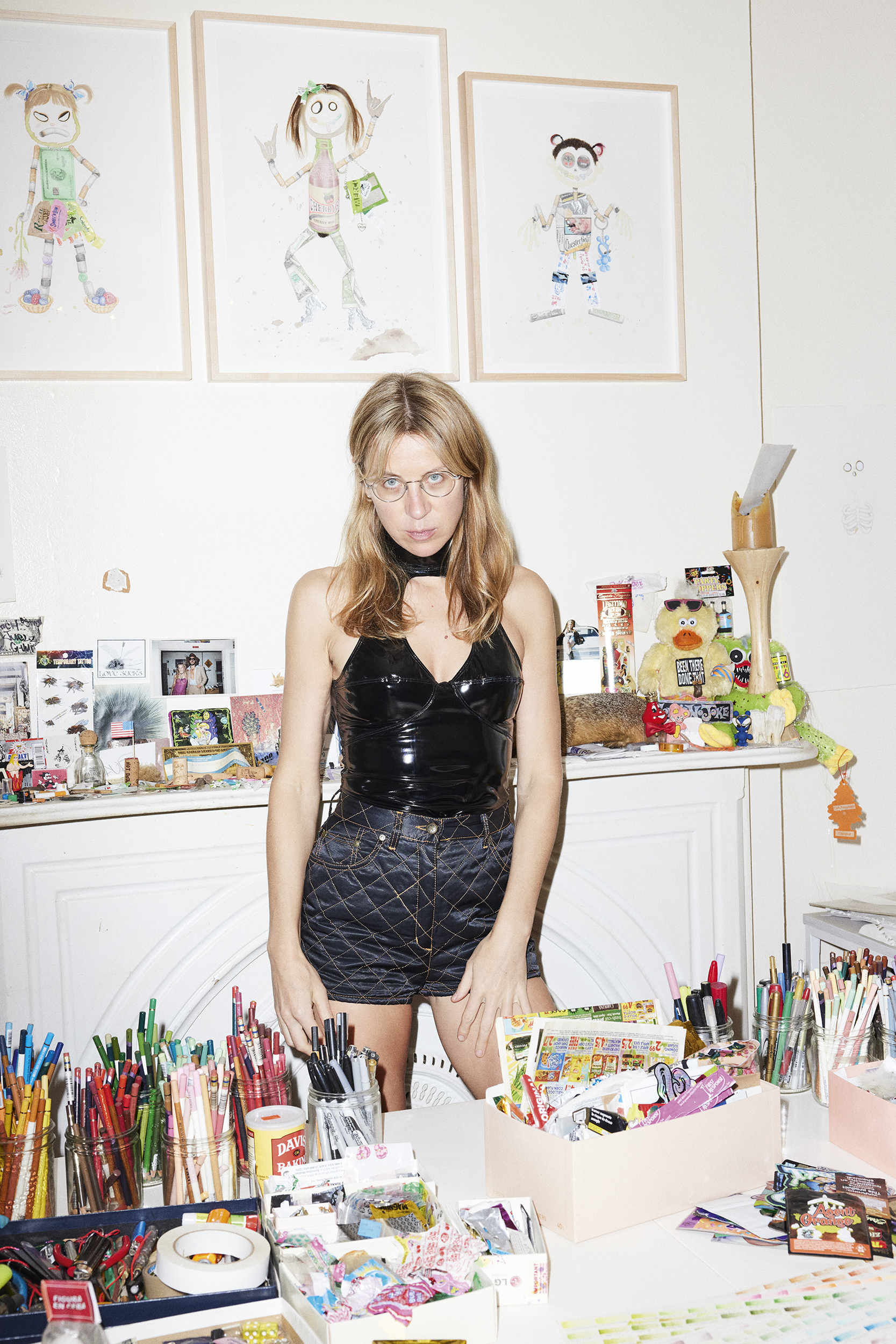Aurel Schmidt used to tell her mom she wanted her ashes scattered “in the planters at the mall in Vancouver” because the Canadian artist loved going into the city so much, she wanted to stay there forever. To the child of “hot parents” from Kamloops, British Columbia, the mall in the big city was the height of culture, a place to rest gleefully among the latest fads. Schmidt’s love of cities has remained strong since moving to New York in 2005 and quickly making a name for herself after selling her first piece in a group art show curated by Tim Barber at Spencer Brownstone Gallery. “You know those giant group shows?” she asks. I nod thinking about the several incohesive and haphazardly strung-together exhibits I’ve attended for artist friends. Cheap wine and pretending to like American Spirits come to mind.

Schmidt was 23 and folding jeans in the stockroom of the designer consignment store INA when she heard that three of her pieces, one of which spelled out BETTER LUCK NEXT TIME using a colony of finely-fuzzed mosquitos, had sold. “When you’re that age, you’re living off of so little that you can basically, like, quit,” she tells me from across her couch. Schmidt did exactly that; she quit her retail job and pursued art full-time. Just a few years later in 2010, her 7-foot-tall minotaur drawing “Master of the Universe/ FlexMaster 3000” was featured in the 75th annual Whitney Biennial. (Like many New Yorkers, FlexMaster 3000’s muscles are made of stardust and cigarettes.)
“What I do is kind of what I’ve always done since high school,” Schmidt admits. “See this little skeleton girl,” she points at a work in progress hanging over her drawing desk, which is cluttered with pencils of every shade and several colorful weed baggies to match. “She’s me, and she’s dead. In that portrait, I’m thinking about partying, aging, and death, and what it means to be an artist.” Most of Schmidt’s drawings take about a hundred hours to complete. From a granular perspective, they are deliciously intricate, accounting for every speck of cigarette ash and every serif on curlicued pubes. But a more comprehensive look honors the quotidian junk we anchor our personalities to and use to shape (and cope with) our existence. “They’re small pieces, good for a laugh,” she says, “and maybe you can relate in this kind of sweet, sad way.”
As we walk into her main studio—or, as she affectionately calls it, her “junk room,” as it is filled with the found objects she works into her pieces—there are a few drawings taped up on the wall, all of them pristinely detailed. She gestures at one and says, “That’s a portrait of my friend Sicky Sab.” I note that Sicky Sab has pubic hair that appears to be made of real hair. Schmidt explains that though it isn’t Sab’s hair, it is real hair. “She’s pretty punk though, so she probably does have a big bush,” the artist says, laughing. Now 42, Schmidt has been in the art world long enough to expect and be bored by its modus operandi, and in response, insists on playfulness. When she laughs, it feels naughty, as if joining her in a mere giggle is transgressive. “I don’t really give a shit about the art world,” she mumbles with a half smile, shrugging her shoulders, “Fugget about it.”

V MAGAZINE: What room are we in right now?
AUREL SCHMIDT: We’re in my junk room where all my junk stuff lives, as well as my garbage collection.
V: Tell us about your work.
AS: Almost all of it is a self-portrait. It becomes an alchemy where I can channel my feelings, thoughts, fears, and hopes, into another form. I wouldn’t say it’s therapy, because I want to please other people and do it for an audience—I’m performative, so it’s not just for me. At its best, my work transforms something within myself for other people.
V: What makes your art possible?
AS: Anxiety?
V: When you decided to pursue your passion, was there anything that surprised you?
AS: How frustrating it is and how hard it can be. It’s like a fight, but ideally, it’s a fight you enjoy. But it can be hard sometimes.
V: If you weren’t an artist, what would you be doing?
AS: If it was an apocalypse situation, I’d probably have to be some kind of prostitute, I’m sure.
V: Who should everyone know about?
AS: Sexyy Red.
V: What singular work of art should everyone experience?
AS: If someone could get to see the original Hieronymus Bosch pieces… They’re in the Museo Nacional del Prado in Madrid. They have Paradise and Hell. In real life, they’re just spectacular. In the same museum, they also have [Francisco] Goya’s Black Paintings. His Black work, he was just doing it for himself. There are all these crazy dark witch pieces. There’s so much anxiety in them. He was doing them on the walls of his home.
V: Best piece of advice you’ve ever received?
AS: In your mistakes, you can find new answers and make interesting art from those answers.
V: Any New Year’s resolutions?
AS: This year I’d like to make more money. I wish I could say something like, “Get a boyfriend,” but that’s not gonna happen. Maybe party less, too.
V: What should our readers do this weekend?
AS: Probably do some cocaine. Just kidding. They should get a cocktail in a very civilized manner.
This story appears in the pages of V146: now available for purchase!
Photography Jeremy Liebman
Discover More



